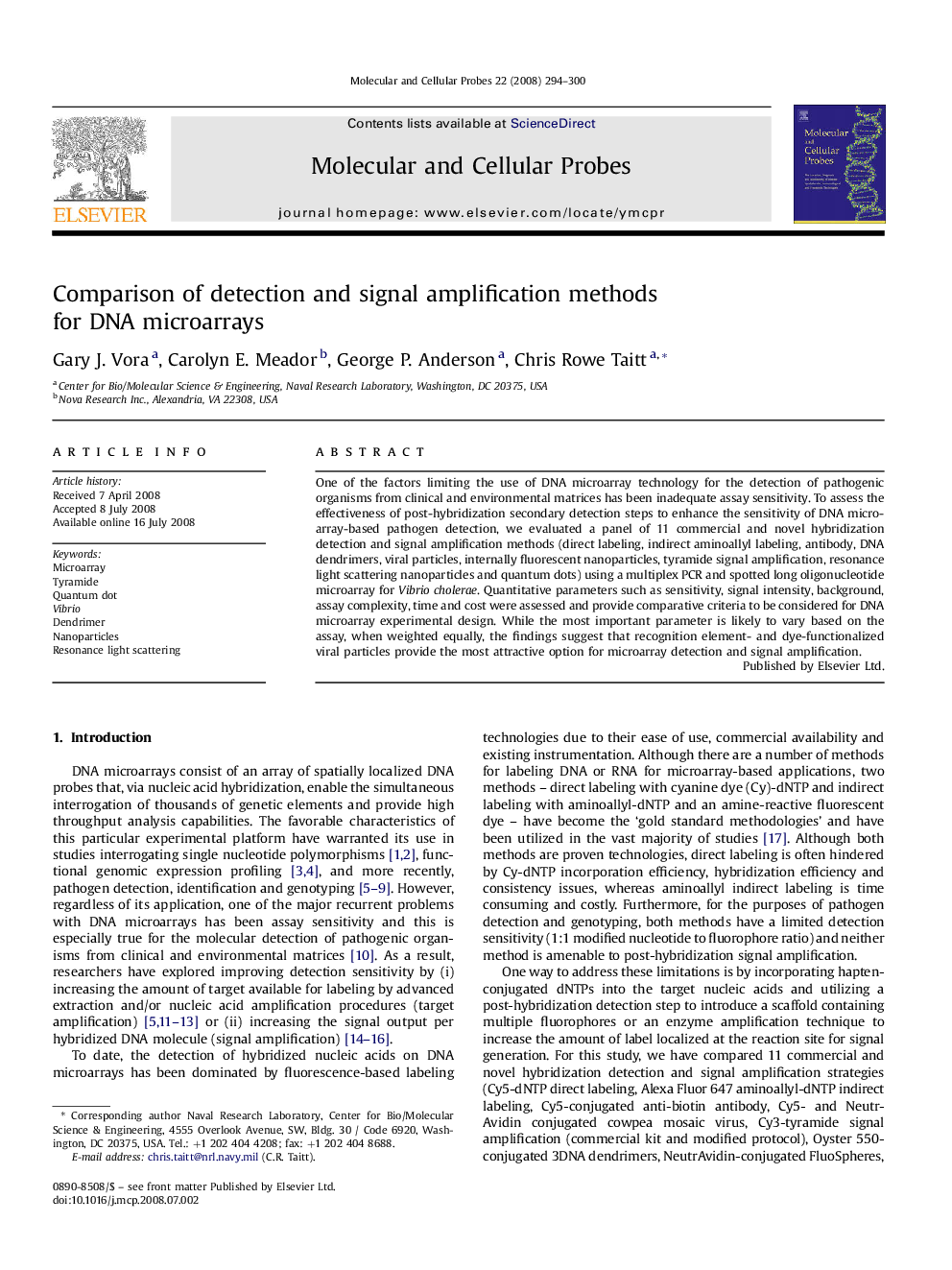| Article ID | Journal | Published Year | Pages | File Type |
|---|---|---|---|---|
| 2199970 | Molecular and Cellular Probes | 2008 | 7 Pages |
One of the factors limiting the use of DNA microarray technology for the detection of pathogenic organisms from clinical and environmental matrices has been inadequate assay sensitivity. To assess the effectiveness of post-hybridization secondary detection steps to enhance the sensitivity of DNA microarray-based pathogen detection, we evaluated a panel of 11 commercial and novel hybridization detection and signal amplification methods (direct labeling, indirect aminoallyl labeling, antibody, DNA dendrimers, viral particles, internally fluorescent nanoparticles, tyramide signal amplification, resonance light scattering nanoparticles and quantum dots) using a multiplex PCR and spotted long oligonucleotide microarray for Vibrio cholerae. Quantitative parameters such as sensitivity, signal intensity, background, assay complexity, time and cost were assessed and provide comparative criteria to be considered for DNA microarray experimental design. While the most important parameter is likely to vary based on the assay, when weighted equally, the findings suggest that recognition element- and dye-functionalized viral particles provide the most attractive option for microarray detection and signal amplification.
